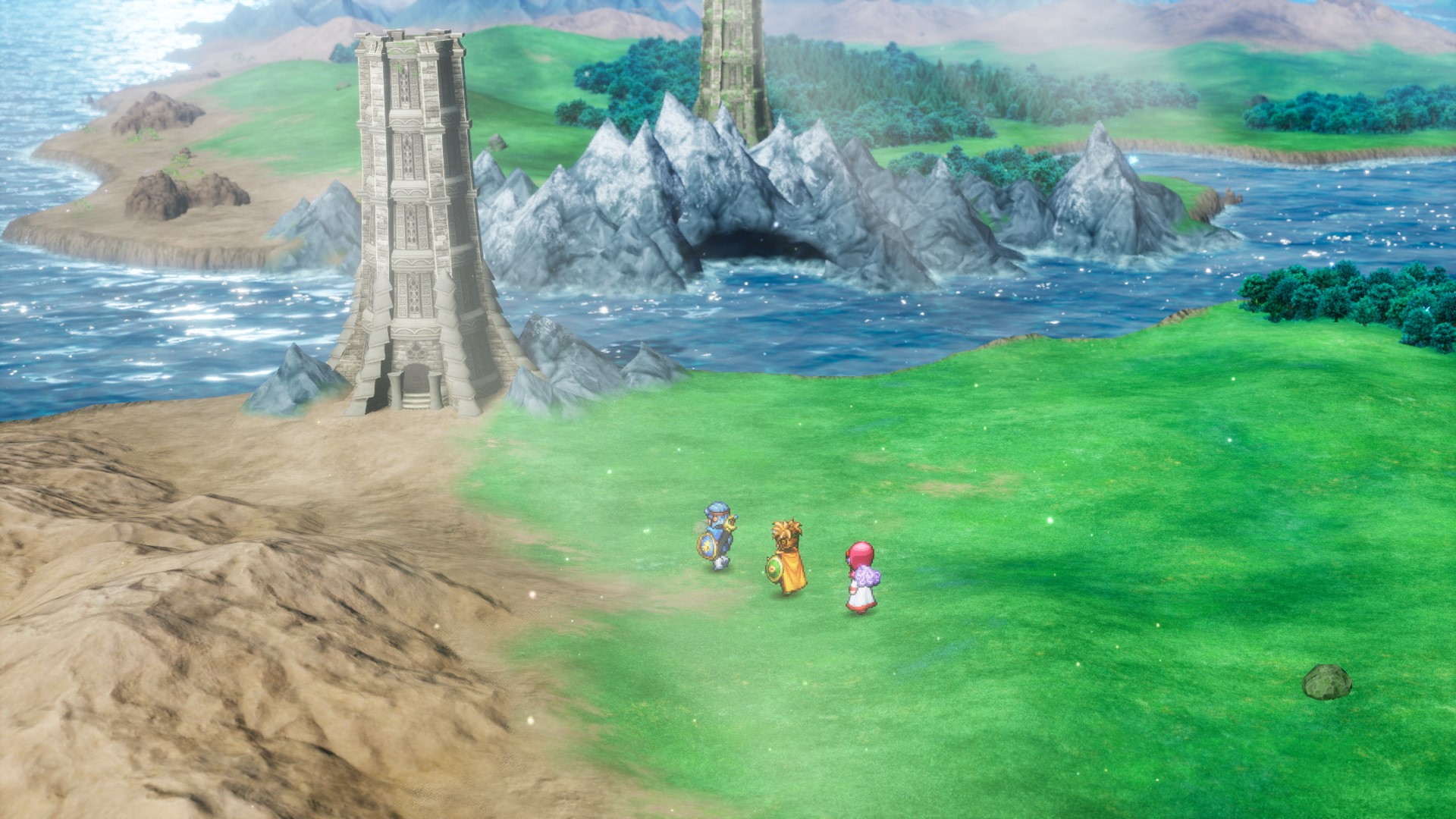Square Enix had one of the busiest booths at Gamescom, but I made sure to take my time with Dragon Quest I & II HD-2D Remake. After Dragon Quest III set such a high bar with its reimagined HD-2D look, I was curious how the first two titles would translate. What I found was more than a faithful update; it’s a careful reconstruction that finally gives these games the weight they deserve.
A single hero in Dragon Quest I, a different path in II
The first demo section placed me in Dragon Quest I, still centered around one lone hero. Playing it this way in 2025 feels unusual, so many RPGs rely on party dynamics that the absence of allies immediately stands out. Instead of trying to hide that solitude, the remake leans into it. The richly layered towns, the forests shimmering under the HD-2D treatment, and the orchestral score make that isolation feel atmospheric rather than empty.
It’s simple, but not simplistic. Each encounter has a kind of gravity that only comes when the hero has no one else to fall back on.
The tone shifts completely with Dragon Quest II. The addition of a fourth party member changes more than just the headcount. Combat is quicker, more tactical, and more engaging than I remembered from the original. Healers and damage dealers can be balanced in new ways, and the rebalancing makes fights feel sharper.
Even within a short demo, the difference was clear: this isn’t a minor tweak, it’s a full rethink of how the second game flows. For players who struggled with the steep difficulty spikes of the NES release, this version feels much more approachable while still rewarding strategy.
Scrolls and a playful link to Pokémon
One new mechanic stood out: scrolls. These items let party members learn extra spells, shifting the usual pace of progression. The developers themselves compared them to Pokémon’s TMs and HMs, and it’s a fitting parallel.
It’s almost ironic, Pokémon famously borrowed from Dragon Quest’s RPG roots, and now Dragon Quest takes a page back. The scrolls give you freedom in shaping your party, letting combat flow differently depending on how you spread out those new abilities. It’s a small addition, but it freshens up the system in a way that made me experiment right away.
Another great entry
The presentation leaves little doubt that this is a prestige project. The HD-2D visuals are consistently stunning, the voice acting adds warmth to every scene, and even small UI refinements make exploration smooth. It doesn’t feel like a quick reskin; it feels like a game rebuilt to stand proudly on modern platforms.
For players in Europe, where the original Dragon Quest I and II were never easily available, this isn’t just a remaster, it’s a proper introduction.
Early conclusion
Both games left me impressed for different reasons. Dragon Quest I retains its lonely, stripped-down identity, now framed in a way that makes that simplicity striking rather than dated. Dragon Quest II benefits from new party dynamics, rebalancing, and scrolls that add unexpected flexibility. Together, they close the Erdrick trilogy in the best way possible. Square Enix is treating these games as more than history; they’re being given the kind of care that makes them worth discovering all over again.



